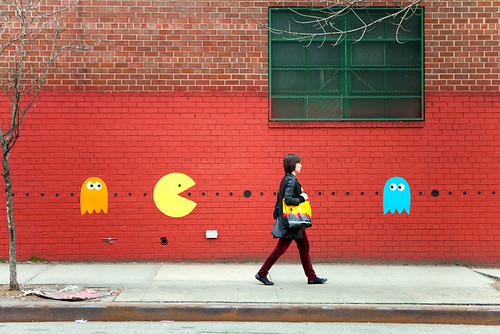Hey all! I totally forgot to post one of the examples of a design brief from my last class, and I'm not at my home computer right now, so I found one online that is pretty similar to what we did in that class.
Here is the linkIf that doesn't work,
click here and when you get to the page, click on the design brief.
I'm also including one of my own that I found in my old emails. It's not the best, but you can get the idea (and, it's short!) The assignment for this was to recreate a movie poster to sort of
rebrand the movie.
The subheads we included were:
Organization overview (self-explanatory)
Identification of target audience (who does this organization reach, and who are you hoping to reach with your campaign/event, etc)
Identification of competing brands (what companies are your client's competition?)
Positioning statement (What is the point of your campaign/event/etc. What are you trying to accomplish?)
Organizational personality. (If your client was a human/person, what would they be like.)
An over view of the organization
When Harry Met Sally is a classic romantic comedy, made in 1989 and featuring Meg Ryan and Sally and Billy Crystal as Harry. Harry and Sally meet in college, and then run into each other over and over again for years before their friendship develops. After supporting each other through multiple breakups, their relationship eventually takes a romantic turn. The movie’s theme is an analysis of the question: Can men and women really be “just friends’? Both Harry and Sally stubborn, and it takes the entire 96 minute film for them to realize that they are meant to be.
Identification of target audience
When Harry Met Sally is a classic romantic comedy, and it’s target audience encompasses women of all ages, particularly 20-somethings and older. When Harry Met Sally is the “favorite” of many women in their 40’s, as the film was released when today’s 40-somethings were 20-something.
Identification of competing brands
Competing films include other “old” romantic comedies, like Sleepless in Seattle, Pretty Woman, Steel Magnolias, You’ve Got Mail, Runaway Bride, Must Love Dogs and While You Were Sleeping.
Positioning Statement
With a new movie poster, When Harry Met Sally looks to re-brand itself to recapture the hearts of women 30+ and introduce itself to younger women who didn’t grow up with the same love of the 80’s and 90’s culture and entertainment.
Organizational Personality
When Harry Met Sally is sweet, spunky and stubborn. It’s not very graceful but rather stumbles on it’s own words and clumsily spills ketchup of coffee on itself on a daily basis. When Harry Met Sally is awkward, but endearing, and straddles a thin line of uniqueness and classical cheesiness.
I hope this helps!!


























